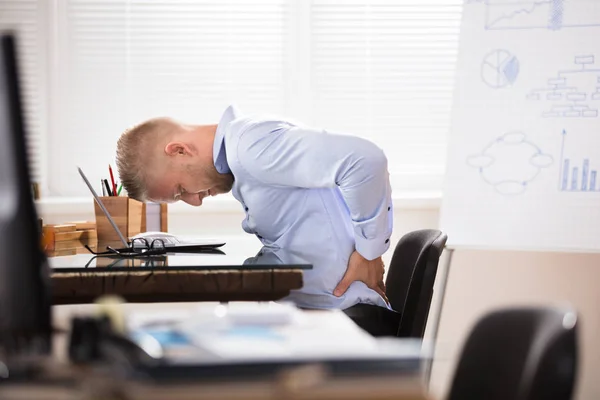Fortunately, most back pain gets better with rest and at-home treatments. The first step is to take over-the-counter pain relievers such as NSAIDs or acetaminophen.
Many back pains are caused by straining muscles or ligaments in the spine. Taking good posture, lifting heavy objects correctly and learning proper movement techniques can help prevent these injuries. Find out five strategies for reducing pain in the back. Go to silentbio.com to learn more. For more complete details, read more.
1. Injury
Injuries to muscles, ligaments and joints in and around the spine can cause lower back pain. Typically, the pain is influenced by how the spine is loaded — moving, lifting, twisting or sitting and standing for long periods.
Infections of the spinal structures can also cause back pain. Often, these infections are accompanied by other symptoms such as loss of bowel or bladder control, fever and weakness.
It is important to figure out what is causing the pain to help treat the condition. For short-term back pain, acetaminophen and nonsteroidal anti-inflammatory drugs such as ibuprofen and naproxen can help relieve the pain by suppressing inflammation. Other medications such as gabapentin and pregabalin can help control pain by inhibiting certain nerve chemicals that transmit sensation.
2. Osteoarthritis
The lower back supports the weight of your body, so injuries or problems with the bones and joints in this area can be very painful. Osteoarthritis is the most common cause of low back pain in older adults. This condition occurs when the cartilage and other tissues that line joints break down. This can happen because of age, injury, or having a family history of arthritis.
When a joint breaks down, extra bone can form and rub against other bones or tissue. This can lead to pain, swelling, and stiffness in the joint.
It is also possible to get an infection in the spine. This can be dangerous and is called osteomyelitis. It can cause severe pain, fever, and loss of control of the bowels or bladder.
3. Bulging or Herniated Discs
Accidents, improper lifting, or overuse can cause discs in the spine to protrude or rupture (herniate) out of their normal position. This can put pressure on spinal nerves and cause pain. It can also lead to a narrowing, or spinal stenosis, of the canal that houses the spinal cord and nerves.
Discs dehydrate and stiffen with age, which makes herniated disks more likely to happen. Genetics, smoking, and a sedentary lifestyle can contribute to herniated disks as well.
A physical exam is the first step to diagnosing herniated discs. The doctor will check your back for sore areas and lift or move your legs in certain ways to see if you feel pain. X-rays, MRI, and CT scans may help doctors find the source of the herniated disk.
4. Scoliosis or Kyphosis
Millions of people live with back pain that interferes with daily activities. If you experience numbness, weakness or severe pain that limits your ability to move and enjoy life, contact your health care provider for treatment.
The spine is made of rectangular-shaped bones called vertebrae, stacked on top of each other and connected by tough bands of tissue called ligaments. The five lumbar vertebrae in the lower part of the back bear the most stress and allow bending and twisting.
A condition called kyphosis is an abnormal forward curve of the spine. It can affect the upper (thoracic) or lower (lumbar) spine and can cause pain in the muscles of the back, arms or legs. It may also lead to spinal problems such as herniated discs and osteoporotic fractures.
5. Fractures or Dislocations
If back pain lasts more than 72 hours or is accompanied by bowel and bladder control problems, fever, chills, or numbness and weakness in the legs, see your doctor immediately. Injections of a steroid medication may help. If simpler treatments are not effective, surgery may be needed to remove a herniated disc or to fuse two spinal vertebrae together.
A dislocated joint hurts when it is used and often looks distorted or bent out of place. It usually bruises (begins purplish black and gradually turns yellow over several days). A dislocated joint is not safe to use until a doctor puts it back in place. In some cases, dislocations can be treated without surgery by a doctor who manipulates the bones to return them to their normal positions. However, complications, such as blood vessel and nerve damage, compartment syndrome, and long-lasting back problems, are more common when a dislocation is not treated right away.
